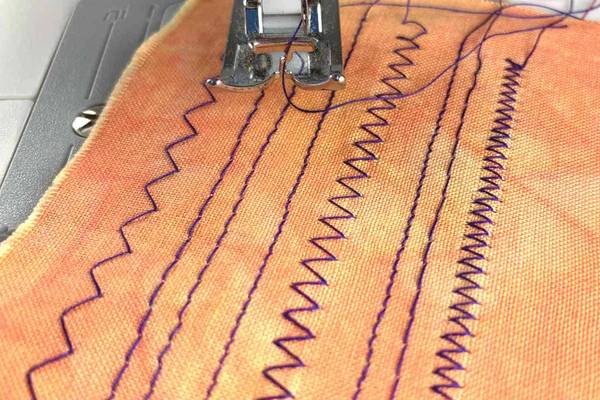
Things To Know When Buying A Sewing Machine
Embarking on the journey of buying a sewing machine can be both exciting and daunting, whether you’re a seasoned seamstress or venturing into the world of sewing for the first time. With a plethora of models, features, and specifications available, knowing where to start can be overwhelming. In this blog post, we’ll unravel the complexities of choosing the right sewing machine, guiding you through the essential things to know before making your purchase.
From understanding the types of sewing machines to considering your sewing needs and budget, we’ll equip you with the knowledge you need to make an informed decision.
So, if you’re contemplating adding a sewing machine to your creative toolkit, you’re in the right place. Let’s dive into the essential considerations for buying a sewing machine.
Understanding Sewing Machine Types
When venturing into the world of sewing, selecting the right machine can feel like navigating a labyrinth. Broadly speaking, sewing machines fall into three categories: mechanical, electronic, and computerized. Each type caters to different sewing needs, skills, and budgets.
Mechanical machines are the traditional workhorses. They operate on dials and knobs and are perfect for those who appreciate hands-on control over their stitching.
Electronic machines, on the other hand, simplify the sewing process. You select stitches with the push of a button, and the machine adjusts tension and stitch length for you. They’re a step up in convenience and functionality.
The crème de la crème of sewing machines are computerized models. These marvels come equipped with a computer, allowing for an array of features, from automatic thread cutting to intricate embroidery functions. Despite their higher price tag, their precision and ease of use make them a favorite among both novices and seasoned sewists.
Key Stitches and Their Applications
Understanding key stitches and their applications is crucial for successful sewing projects. Here’s a rundown of essential stitches:
- Zig Zag Stitch: Ideal for finishing raw edges and sewing stretch fabrics.
- Stretch Straight Stitch: Perfect for durable seams in stretchy fabrics.
- Tri-motion Stitch: Prevents fraying by finishing edges.
- Blind Hem Stitch: Creates barely visible hems for a professional finish.
- Buttonhole Stitch: Simplifies the process of making buttonholes, a one-step option can be a lifesaver.
For those working with knits, a Stretch or Knit Stitch is indispensable. It allows the fabric to stretch without popping the threads, ensuring durable seams.
Selecting the Right Sewing Machine
Selecting the right sewing machine is a blend of art and science, combining personal needs with technical capabilities. In this part, we delve deeper into design considerations, features suitable for young sewers, and the significance of attachments.
Design Considerations for Embroidery
Embroidery adds a personal touch to any sewing project, making the choice of an embroidery-capable machine an important one. Here are key points to consider:
- Design Format Compatibility: Ensure the machine supports the embroidery formats you intend to use, as each manufacturer may use different formats.
- Transfer Methods: Assess how designs are transferred to the machine. Options include USB cables, USB sticks, or WiFi. Your choice will depend on your technological preferences and setup.
- Inbuilt Designs and Fonts: Review the preloaded designs and fonts. A generous selection reduces the need for immediate additional purchases.
- Design Software: Investigate the included software. Its ability to create or customize designs can significantly enhance your creative potential.
Features for Young Sewers
Introducing young ones to sewing can be rewarding. To ensure a positive experience, consider machines with:
- Speed Control: Machines with speed control allow young sewers to manage the pace, making the learning process safer and more enjoyable.
- Needle Guard: For added safety, a needle guard can protect little fingers from accidents, teaching them the importance of safety while sewing.
Additional Attachments and Their Importance
Attachments extend the functionality of your sewing machine, turning complex projects into manageable tasks. Key attachments include:
- Presser Feet Variations: A selection of presser feet can significantly influence project quality, allowing for precision in a variety of tasks.
- Specialized Feet for Quilting and Clothing: For quilting, a walking foot is essential, while a ¼” foot aids in precise seams. Clothing projects benefit from a buttonhole foot and blind hem foot.
- Compatibility and Availability: Ensure the machine either comes with the desired attachments or allows for their purchase separately. This flexibility ensures your machine grows with your sewing skills.
Selecting the right sewing machine is a journey filled with decisions on features, attachments, and capabilities that best suit your sewing aspirations. Whether you’re embroidering, teaching a young one to sew, or expanding your project scope with attachments, the right machine is out there.
If you want to read such kind of detailed information then visit sewinging.com
Remember, the key to a fulfilling sewing experience lies in choosing a machine that not only meets your current needs but also accommodates future growth in your sewing journey. With careful consideration of the design, features for young sewers, and the right attachments, you’re well-equipped to make an informed decision.







